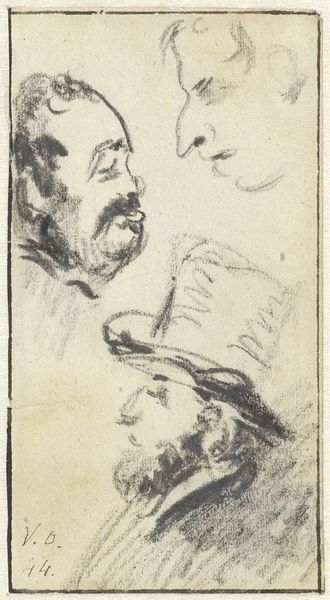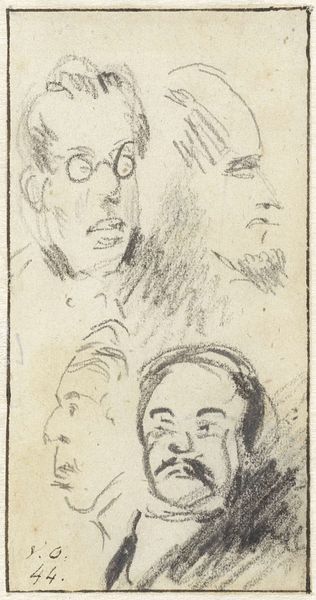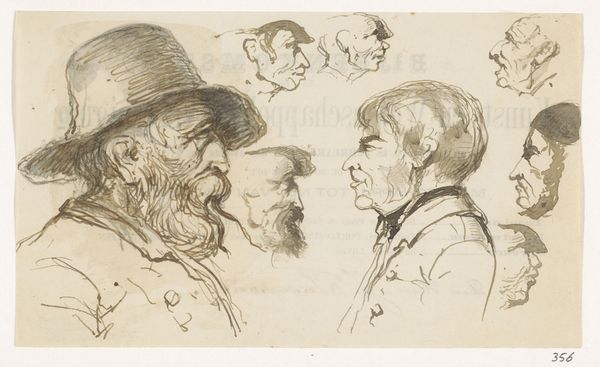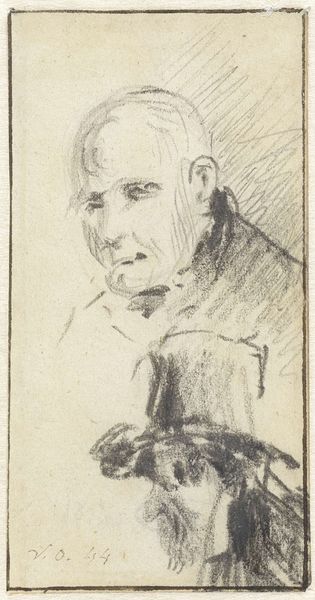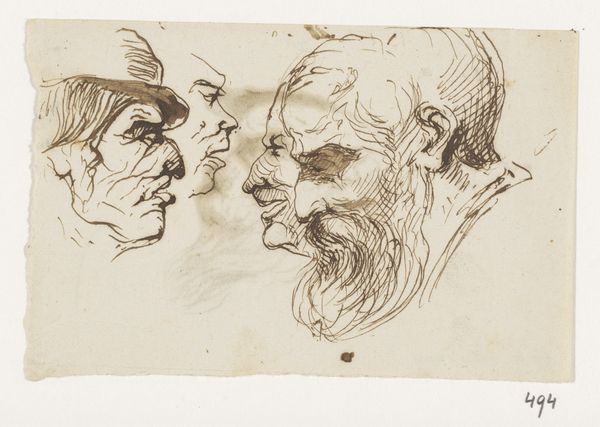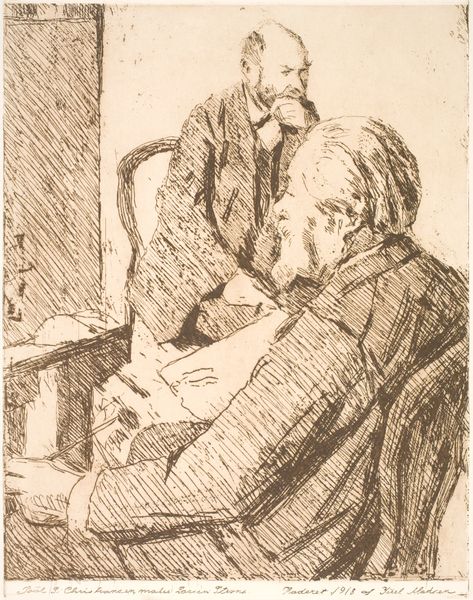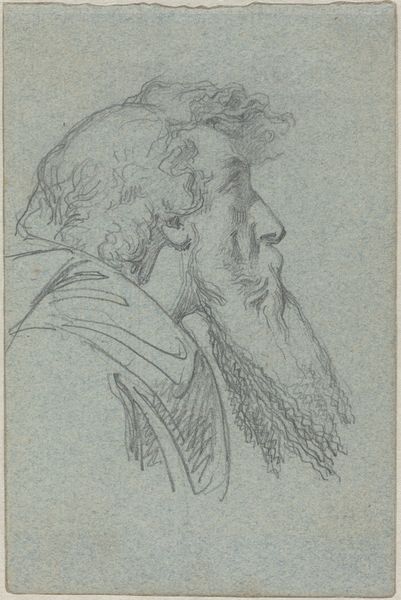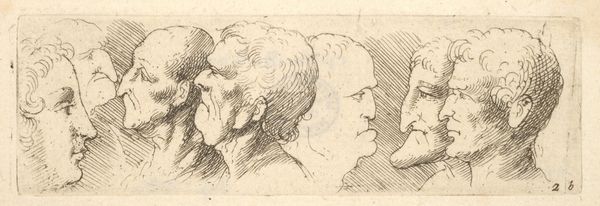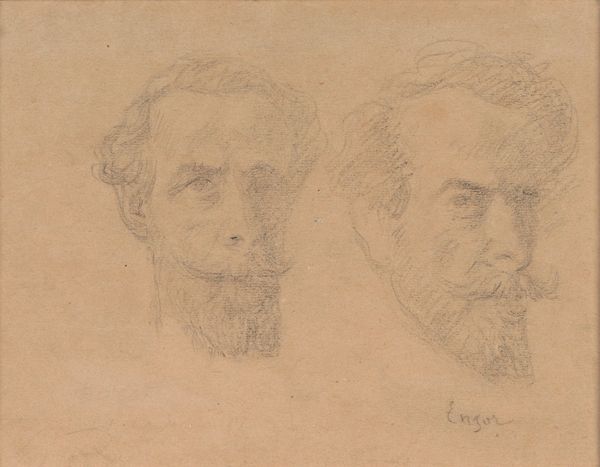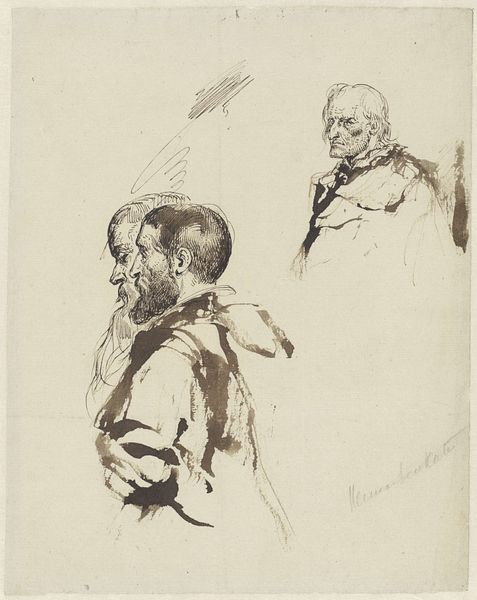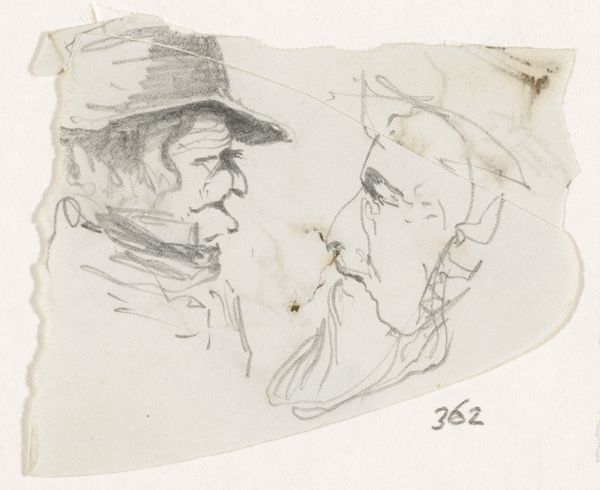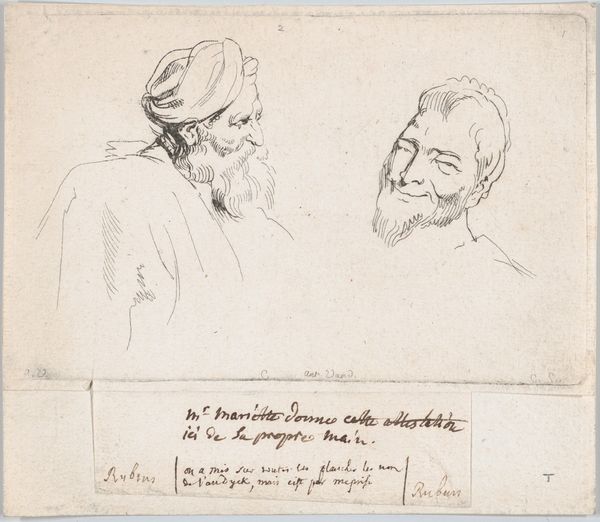
#
pen sketch
#
pencil sketch
#
personal sketchbook
#
ink drawing experimentation
#
pen-ink sketch
#
pen work
#
sketchbook drawing
#
watercolour illustration
#
storyboard and sketchbook work
#
sketchbook art
Dimensions: height 87 mm, width 46 mm
Copyright: Rijks Museum: Open Domain
Curator: Before us, we have "Studies van drie mannenhoofden" created in 1844 by Georgius Jacobus Johannes van Os, housed right here at the Rijksmuseum. It's a fantastic example of his preliminary work. Editor: My immediate feeling is captured and fleeting. It feels like a secret glimpse into the artist's mind, a page torn from a private sketchbook. It’s rough and raw but somehow intimate. Curator: Absolutely. The use of pen and ink and the nature of sketchbook art places emphasis on the process of making, highlighting experimentation and the role of the artist’s hand. We’re witnessing van Os working through ideas. Editor: There's a rawness that almost feels… contemporary. I imagine him in a bustling cafe, scribbling these characters as he observes them, giving life to these men. Did he see these faces somewhere or was he pulling them from memory, do you think? Curator: Well, during this period, there was increased demand of skilled artistic labour driven by printing presses and book illustration, so artists needed to develop efficient methods to quickly sketch a range of faces and characters for different publications and even for practice. Van Os, as a trained and skilled artist, needed a portfolio filled with range. Editor: Right, practice and labour converge! The man in the top hat, for example - there's a narrative in his very posture, in the delicate hatching around his face. Is it talent when the artist could make someone look a very specific character within very few scribbles and minimal tones. Curator: Exactly, each of the portraits displays particular characteristics. It speaks of social commentary or reflections on class. The quality of paper and ink matters too – accessibility of materials and tools shaped what artists could produce, thus their techniques. It influenced who he could reach with his art, what he could depict, and for what cost he could do it. Editor: I keep imagining stories behind them… the bearded fellow in the bottom of the frame seems melancholy… but his intense stare evokes this sort of silent strength that invites empathy, maybe even a story of hard work behind those very prominent brows… fascinating. Curator: Right. The way this artwork can engage such powerful reflections, it proves what can be done by the means of material production. From selection of specific tools for sketching and watercolour practices – all these features construct its significance within our larger socio-historical frame. Editor: That’s such an objective analysis! The sketches may be mere product of work at the time. And still it leaves you with feelings of deep human connection, if only for a fleeting moment. Curator: Indeed. It’s interesting how different people connect with art with a different lense, from its background or with a rather sensorial feeling.
Comments
No comments
Be the first to comment and join the conversation on the ultimate creative platform.
